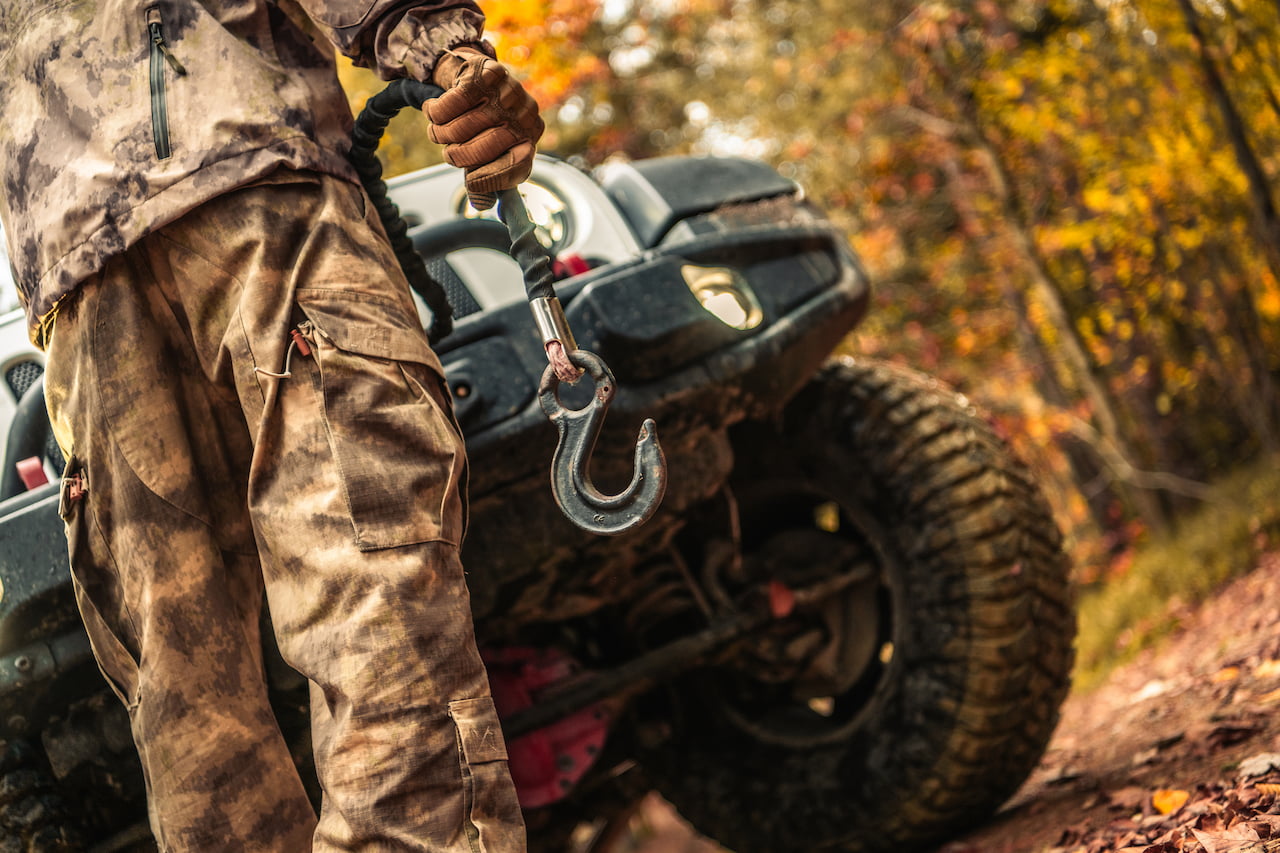Recovering a stuck UTV can be a daunting experience, especially for beginners. Understanding recovery points like tow hooks and D-rings is essential for safe and effective UTV recovery. This guide will walk you through the basics, ensuring you’re prepared for any off-road situation.

Understanding Basic UTV Recovery Points
Recovery points are the foundation of any recovery operation. They are designed to provide secure attachment points for ropes, winches, or straps during a recovery process. Most UTVs come equipped with factory recovery points, but aftermarket options can enhance safety and functionality.
Learn more about UTV recovery basics here.
Types of Recovery Points
- Tow Hooks – Tow hooks are robust, metal hooks mounted to the UTV’s frame. They are ideal for quick recovery operations as they allow easy attachment of straps or ropes. Always ensure that your tow hooks are rated for your UTV’s weight to avoid failure during recovery.
- D-Rings – D-rings, also known as shackles, provide a closed-loop attachment point. They are versatile and can be used with winch lines, straps, or ropes. Opt for D-rings with a load rating that matches or exceeds your UTV’s weight for optimal safety.
- Aftermarket Options – For enhanced reliability, consider upgrading to aftermarket recovery points. Options include reinforced tow hooks or heavy-duty D-rings designed for extreme conditions.
Key Concepts and Essential Information for UTV Recovery Points
Recovery points are critical for safe and efficient recovery operations. Below are essential elements to understand:
- Load Ratings – Recovery points should have a load rating that exceeds the weight of your UTV. This ensures they can handle the stresses of recovery operations without failure.
- Proper Mounting – Recovery points must be securely mounted to the UTV’s frame. Improper mounting can lead to accidents or equipment damage during recovery.
- Maintenance – Regularly inspect your recovery points for signs of wear, rust, or damage. Proper maintenance ensures they remain reliable.
- Compatible Accessories – Pair your recovery points with compatible recovery gear like straps, ropes, and winches for maximum effectiveness.
Find premium UTV recovery accessories here.
Getting Started with UTV Recovery Points: A Beginner’s Guide
- Identify Recovery Points: Locate and familiarize yourself with the factory-installed recovery points on your UTV. Consult the user manual for detailed instructions.
- Upgrade if Needed: Assess whether your recovery points meet your needs. If not, invest in aftermarket tow hooks or D-rings.
- Equip Yourself: Stock up on essential recovery gear such as straps, winches, and gloves for safe operation.
Check out beginner-friendly UTV recovery guides here.
Developing Safe Practices and Essential Habits for UTV Recovery
- Use Rated Equipment: Always ensure that all recovery gear, including straps and shackles, has a load rating compatible with your UTV.
- Distribute Forces Evenly: Use tree savers or equalizer straps to distribute forces evenly and prevent damage to recovery points.
- Follow Proper Techniques: Always pull in a straight line to avoid unnecessary strain on recovery points and equipment.
Seeking Further Knowledge and Professional Guidance on UTV Recovery Points
For beginners, professional guidance can be invaluable. Experienced technicians can assess your UTV’s recovery setup and recommend upgrades or improvements tailored to your needs.
Get expert advice and training for UTV recovery here.
Disclaimer: This information is intended for general guidance. Always refer to your UTV’s manual and consult qualified professionals for specific advice.
Key Takeaways for New UTV Owners
Understanding and maintaining your UTV’s recovery points is crucial for off-road safety. Tow hooks and D-rings are essential components that, when used correctly, can make recovery operations safe and efficient. With proper equipment and practices, you can confidently tackle any off-road adventure.
